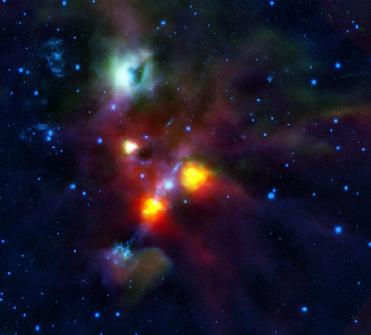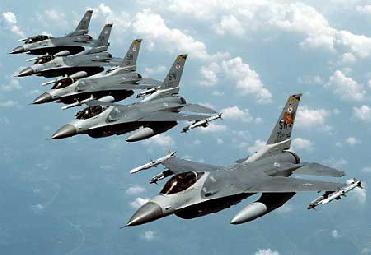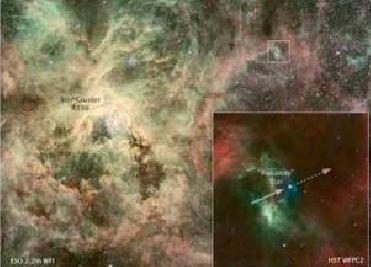
NGC 1999 is the green tinged cloud towards the top of the image. The dark spot to the right was thought to be a cloud of dense dust and gas until Herschel looked at it. It is in fact a hole that has been blown in the side of NGC 1999 by the jets and winds of gas from the young stellar objects in this region of space. ESA/HOPS Consortium photo
NEW DELHI (BNS): The discovery of �a hole in space� by Herschel infrared space telescope has provided astronomers with a surprising glimpse into the end of the star-forming process.
A cloud of bright reflective gas known to astronomers as NGC 1999 sits next to a black patch of sky. For most of the 20th century, such black patches have been known to be dense clouds of dust and gas that block light from passing through, ESA said.
When Herschel looked in its direction to study nearby young stars, the cloud continued to look black.
Investigating further using ground-based telescopes, astronomers found that the patch looks black not because it is a dense pocket of gas but because it is truly empty.
Something has blown a hole right through the cloud. �No-one has ever seen a hole like this,� said Tom Megeath, of the University of Toledo, USA.
�It�s as surprising as knowing you have worms tunnelling under your lawn, but finding one morning that they have created a huge, yawning pit,� he said.
Astronomers think that the hole must have been opened when the narrow jets of gas from some of the young stars in the region punctured the sheet of dust and gas that forms NGC 1999. The powerful radiation from a nearby mature star may also have helped to clear the hole, ESA said.
 Previous Article
Previous Article Next Article
Next Article













The Indian Air Force, in its flight trials evaluation report submitted before the Defence Ministry l..
view articleAn insight into the Medium Multi-Role Combat Aircraft competition...
view articleSky enthusiasts can now spot the International Space Station (ISS) commanded by Indian-American astr..
view article